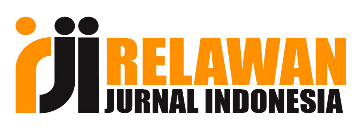Upaya Meningkatan Hasil Belajar Siswa Melalui Penerapan Model Pembelajaran Snowball Throwing Pada Materi Reaksi Redoks
DOI:
https://doi.org/10.32672/jkk.v2i4.116Abstract
Penelitian ini bertujuan untuk mengetahui peningkatan hasil belajar siswa melalui penerapan model pembelajaran snowball throwing dan aktivitas belajar siswa pada materi reaksi redoks serta tanggapan siswa terhadap penerapan model tersebut. Penelitian ini merupakan penelitian tindakan kelas. Setting penelitian terdiri dari tempat,waktu penelitian dan siklus PTK, yang menjadi subjek penelitian ialah siswa kelas X TITL yang berjumlah 19 siswa. Untuk mengetahui aktivitas belajar siswa melalui penerapan model pembelajaran snowball throwing pada materi reaksi redoks dilakukan observasi dan terhadap hasil belajar siswa digunakan tes serta untuk mengetahui tanggapan siswa dari angket. Data yang diperoleh dari hasil pengamatan terhadap keaktifan siswa mencapai katagori baik berdasarkan kriteria yang telah ditetapkan. Dari tes evaluasi awal diperoleh nilai rata-rata kelas yaitu 47, 66 dan ketuntasan kelas 0%, pada hasil ulangan harian siklus pertama ilai rata-rata kelas mengalami peningkatan yaitu 70,20% dan ketuntasan kelas 47,37%, pada siklus kedua nilai rata-rata kelas 76,19 dan ketuntasan kelas , pada siklus ketiga nilai rata-rata kelas 84,25 dan ketuntasan kelas 100%. Dari hasil angket tanggapan siswa diperoleh 91,91% siswa yang memberikan tanggapan positif terhadap penerapan model snowball throwing. Berdasarkan hasil penelitian dapat disimpulkan bahwa penerapan model snowball throwing pada materi reaksi redoks di kelas X TITL SMK Negeri 1 Darul Kamal dapat meningkatkan hasil belajar, aktivitas siswa dan tanggapan siswa sangat baik.
Downloads
Published
How to Cite
Issue
Section
License

This work is licensed under a Creative Commons Attribution 4.0 International License.
Copyright and License Agreement
- The author(s) owns the copyright and other proprietary rights associated with the article.
- The author(s) has the right and is permitted to use the substance of the article for the author's subsequent works, including for the purposes of lectures and books.
- The author(s) grants the first publication rights to the journal under a Creative Commons License (CC BY 4.0).
Creative Commons CC BY 4.0 License Statement
You are free to:
- Share — copy and redistribute the material in any medium or format;
- Adapt — remix, transform, and build upon the material
for any purpose, even commercially.
The licensor cannot revoke these freedoms as long as you follow the license terms.
- Attribution — You must give appropriate credit, provide a link to the license, and indicate if changes were made. You may do so in any reasonable manner, but not in any way that suggests the licensor endorses you or your use.
- No additional restrictions — You may not apply legal terms or technological measures that legally restrict others from doing anything the license permits.











